The Pullman Pan
And the History Its Name Links To — Part One
One of the things I love about writing this newsletter is that I can pull on a thread of something that interests me and get all tangled up in it — in the best possible way — as it unspools.
I don’t make bread often, but I wanted to bake a loaf of the French sandwich bread pain de mie (“bread of crumb”) that is tender, a lovely color and slightly sweet. It makes the best toast, is terrific for sandwiches and French toast, bread pudding, croutons and more.
The pan for the pain is a rectangular, lidded affair — the Pullman loaf pan — and it gives the bread those perfect, neat corners.
And the name?
Pullman loaf pans were used by European bakers as far back as the 18th Century, but acquired their name later thanks to the ubiquity on the Pullman railway system. The loaves of bread baked in these pans were prized in railway dining cars for space efficiency because they stacked well and filled more space than round loaves.
—Laurie Ellen Pellicano, Epicurious, 2022
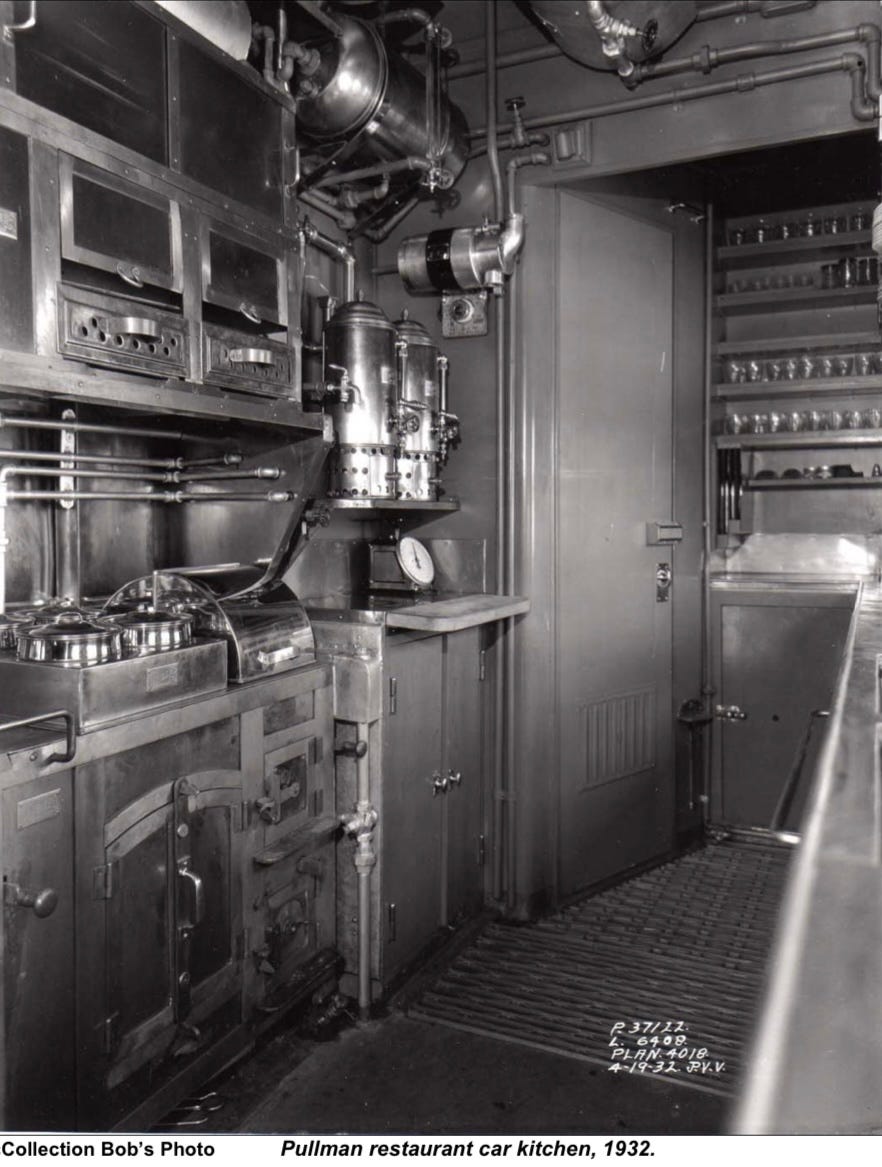
The Pullman Palace Car Company
The company name synonymous with rail travel, sleeping cars and dining cars started on the South Side of Chicago.
In 1864, the powerful industrialist and engineer George Pullman brought luxury to overnight train travel with his revolutionary sleeping cars, where passengers were served by an army of former slaves who became known as Pullman Porters and Maids.
— WTTW, Chicago Stories: Pullman and the Railroad Rebellion
There is so much significant American history surrounding Pullman.
I’ve linked to the excellent WTTW series here: Pullman. Topics include the history of the Pullman Porters and Maids, the labor uprising, and the seeds of the Civil Rights Movement that were planted at the time.
There’s also a video tour of one of the remaining private Pullman Rail Sleeping and Dining Cars from 1889.

On the menu, “Bread and Butter” cost ten cents.
Pain de Mie
I really enjoyed making this bread and the result was delicious — plus, I just love the look of it. I used a 9”x 4” x 4” Pullman pan, and the recipe below also has measures for various size pans.
*IT’S VERY IMPORTANT TO LET THE DOUGH RISE (2nd Rise) TO ALMOST THE TOP OF THE PAN BEFORE SLIDING ON THE LID.
Pan de Mie RECIPE: HERE
I made French Toast with Maple Syrup and Blueberries for a “Cutting Board Brunch” and some Toast Soldiers and an egg to dip them in for breakfast the next day.
French Toast Recipe: HERE
BREAD BAKING
If you are interested in learning everything about bread baking from an absolute expert, then you’ll want to subscribe to Andrew Janjigian of Wordloaf. Here is his recipe for Shokupan, or as Andrew cleverly calls it, “Shokupain de Mie”.
Both Pain de Mie and Shokupan are adaptations of English milk bread; Shokupan was supposedly introduced to Japan by an English baker in 1865, and it likely came to France around the same time.
Have a good weekend, everyone, and thank you, Andrew!
Jolene
If you’re enjoying Time Travel Kitchen, I hope you’ll consider upgrading and supporting my work with a paid subscription. Thank you!


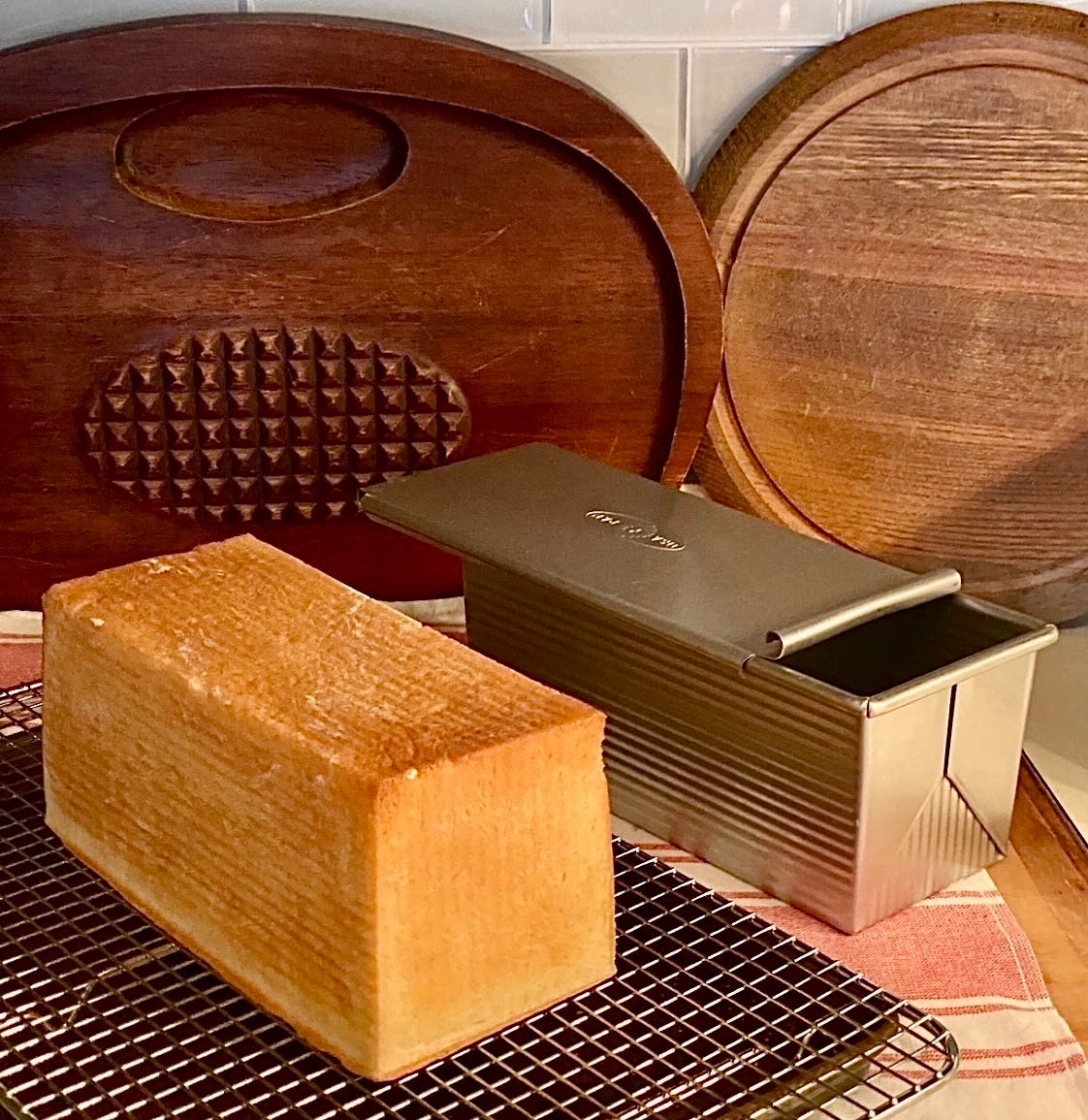
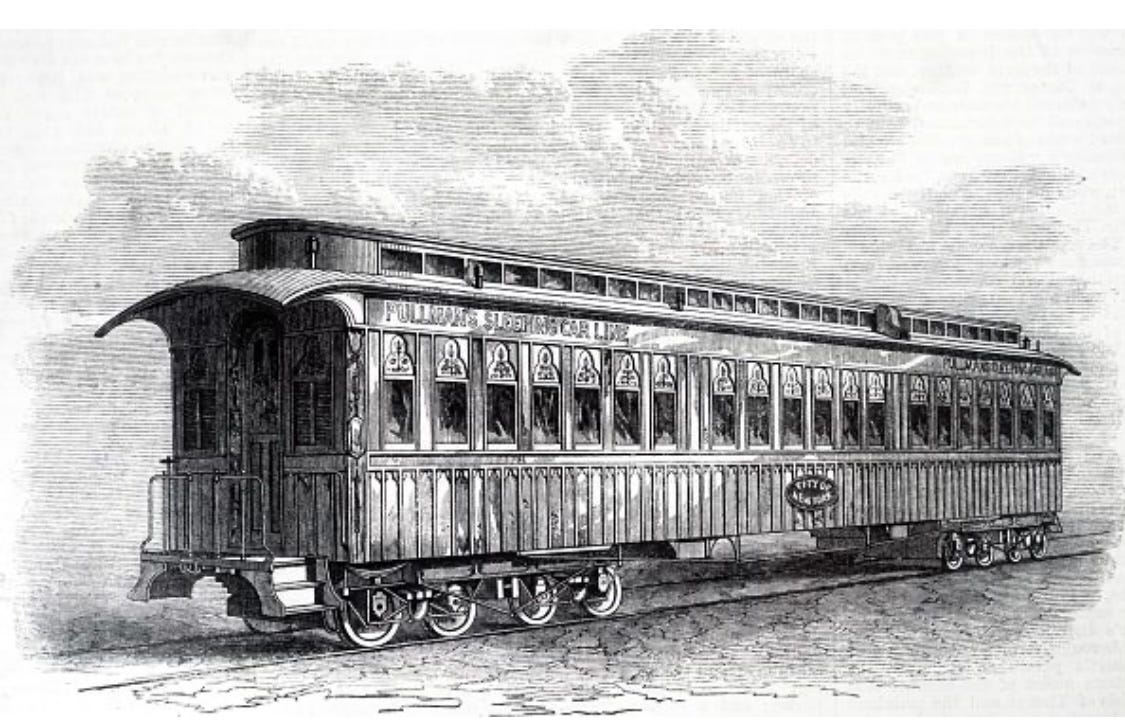
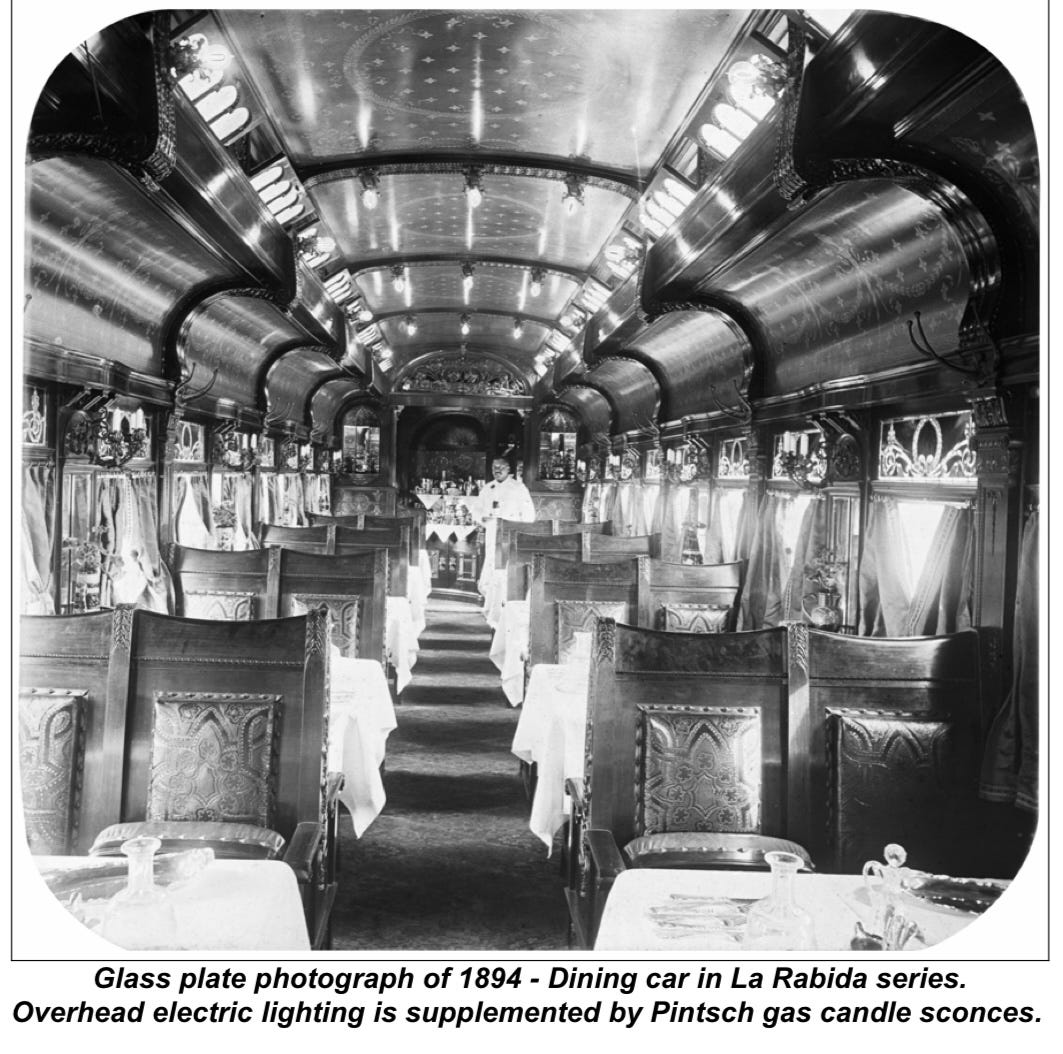
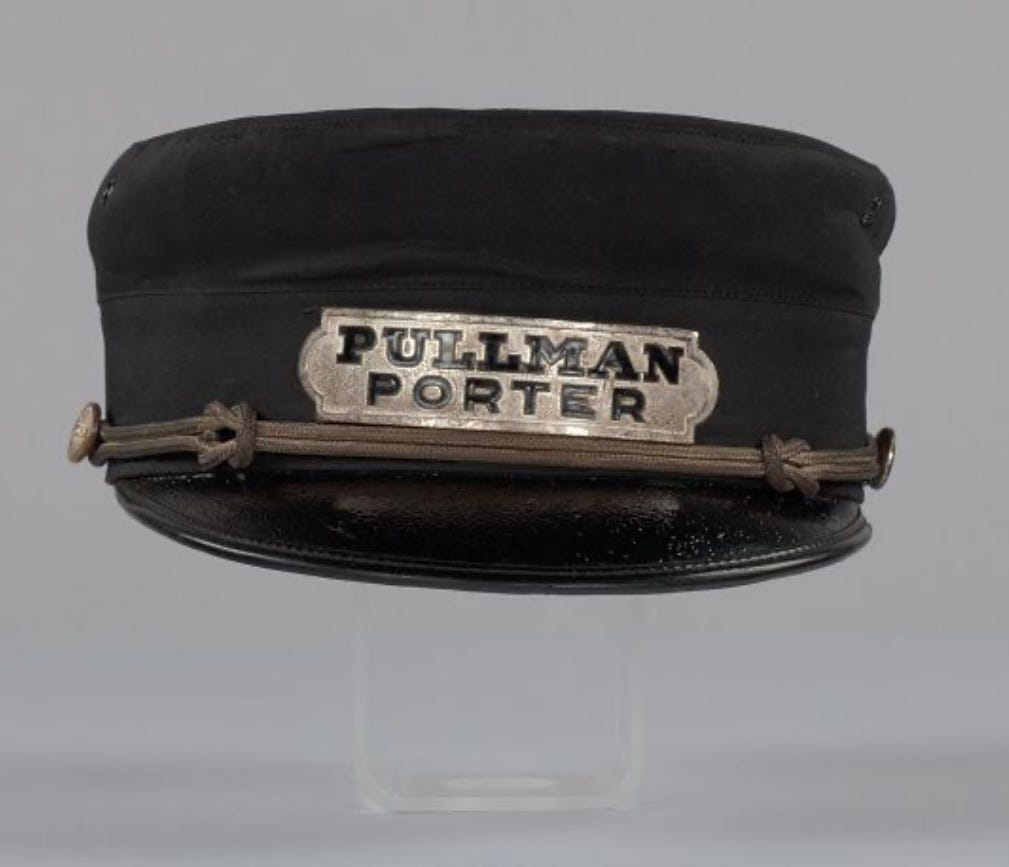
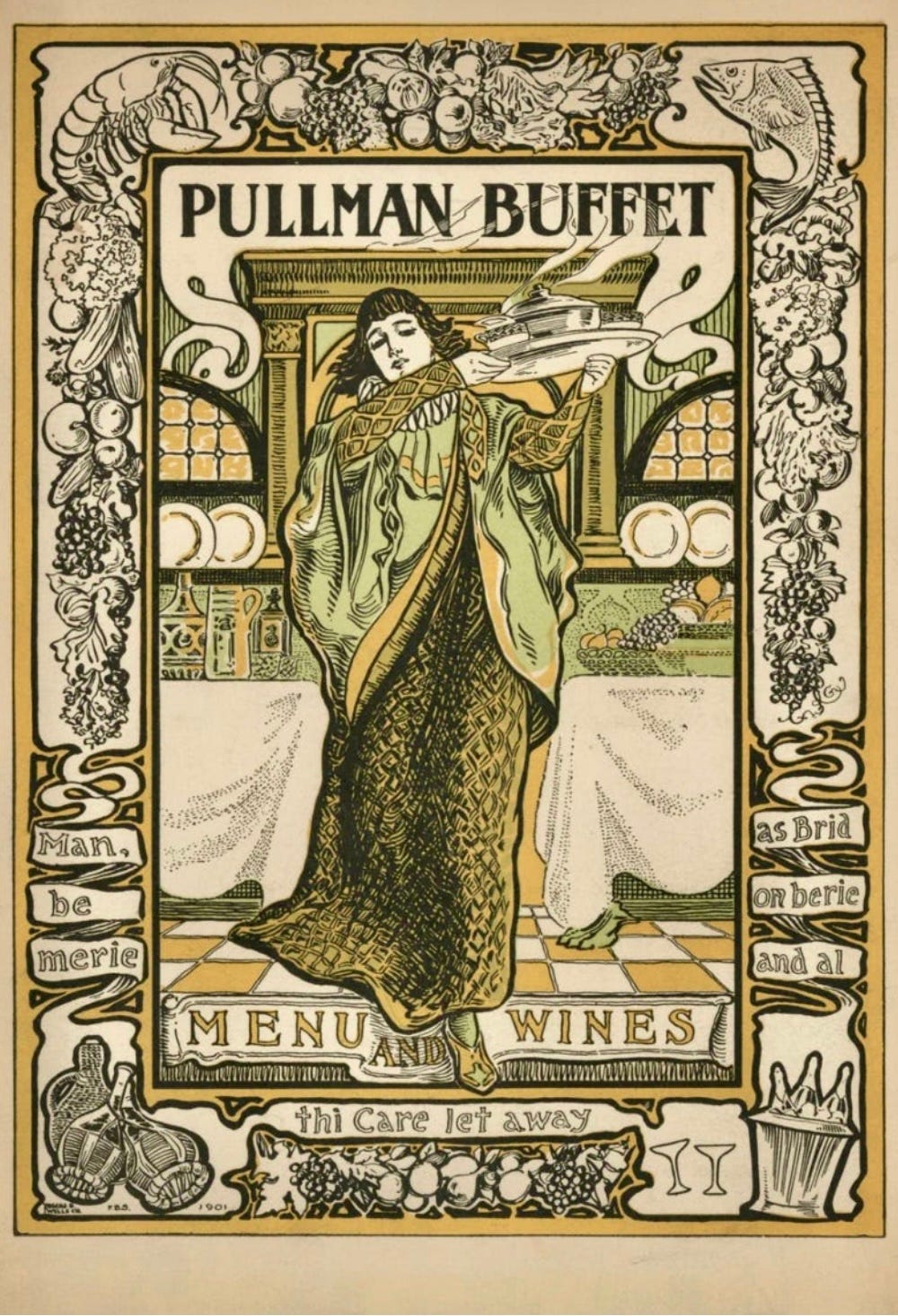
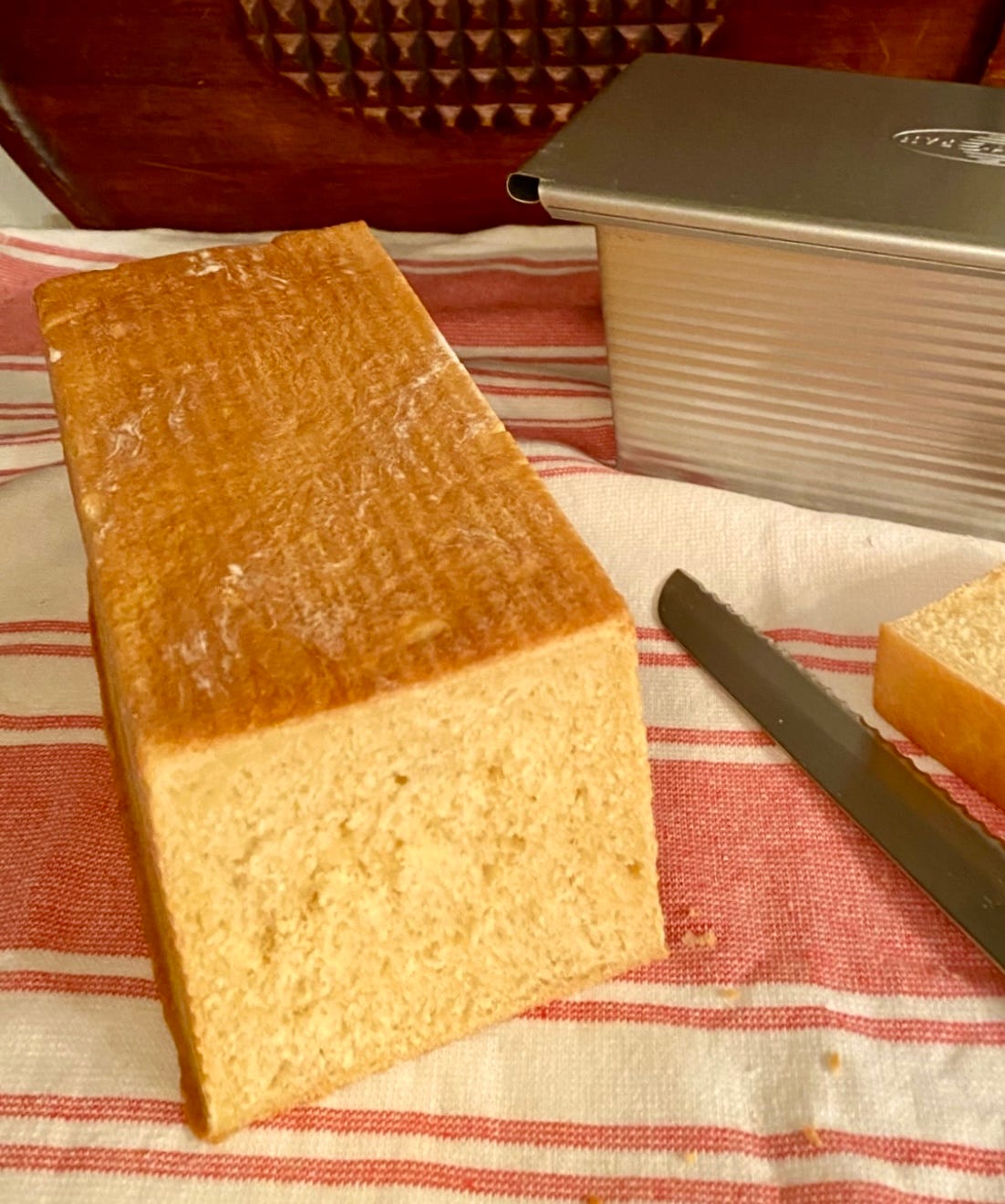
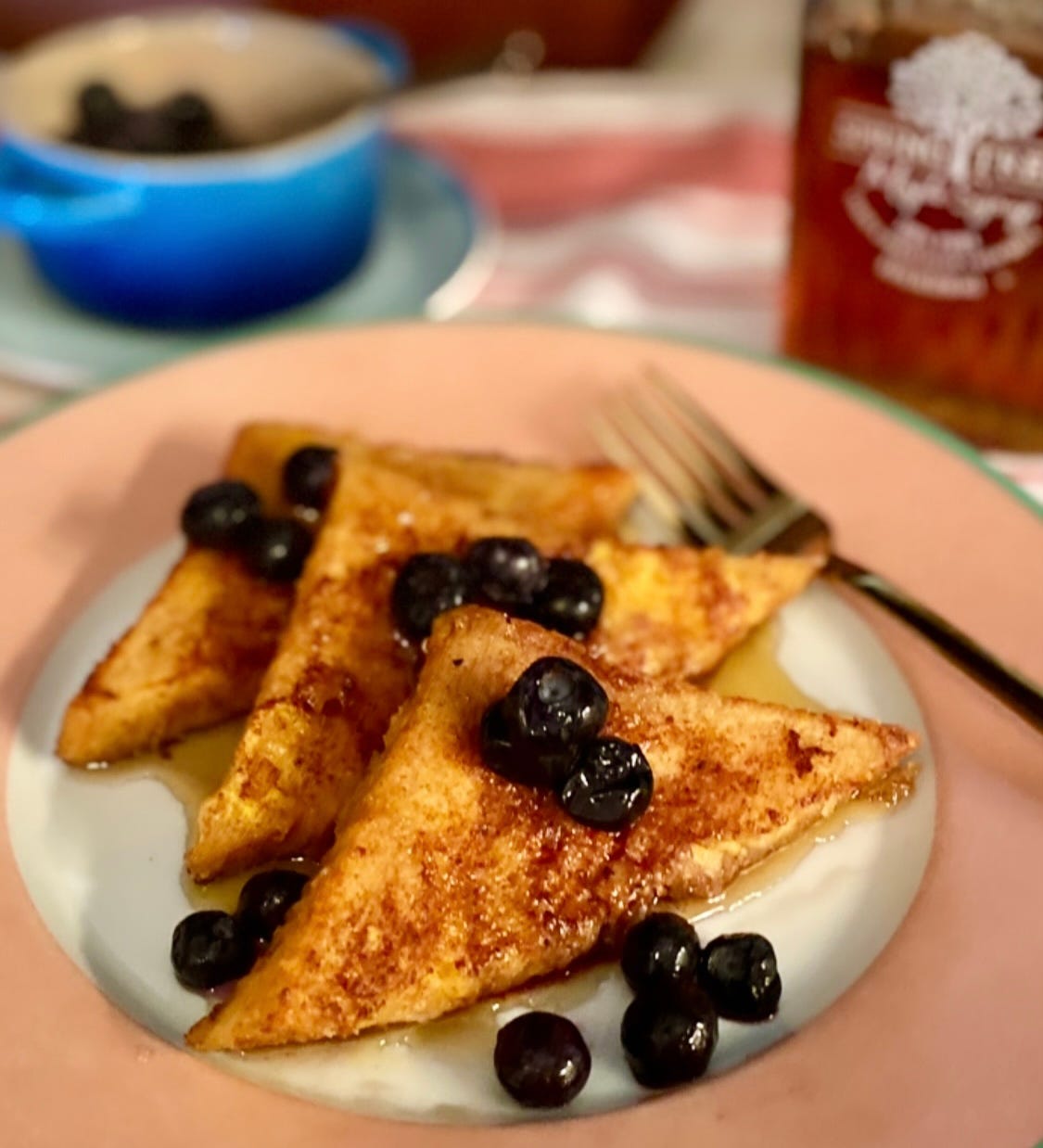
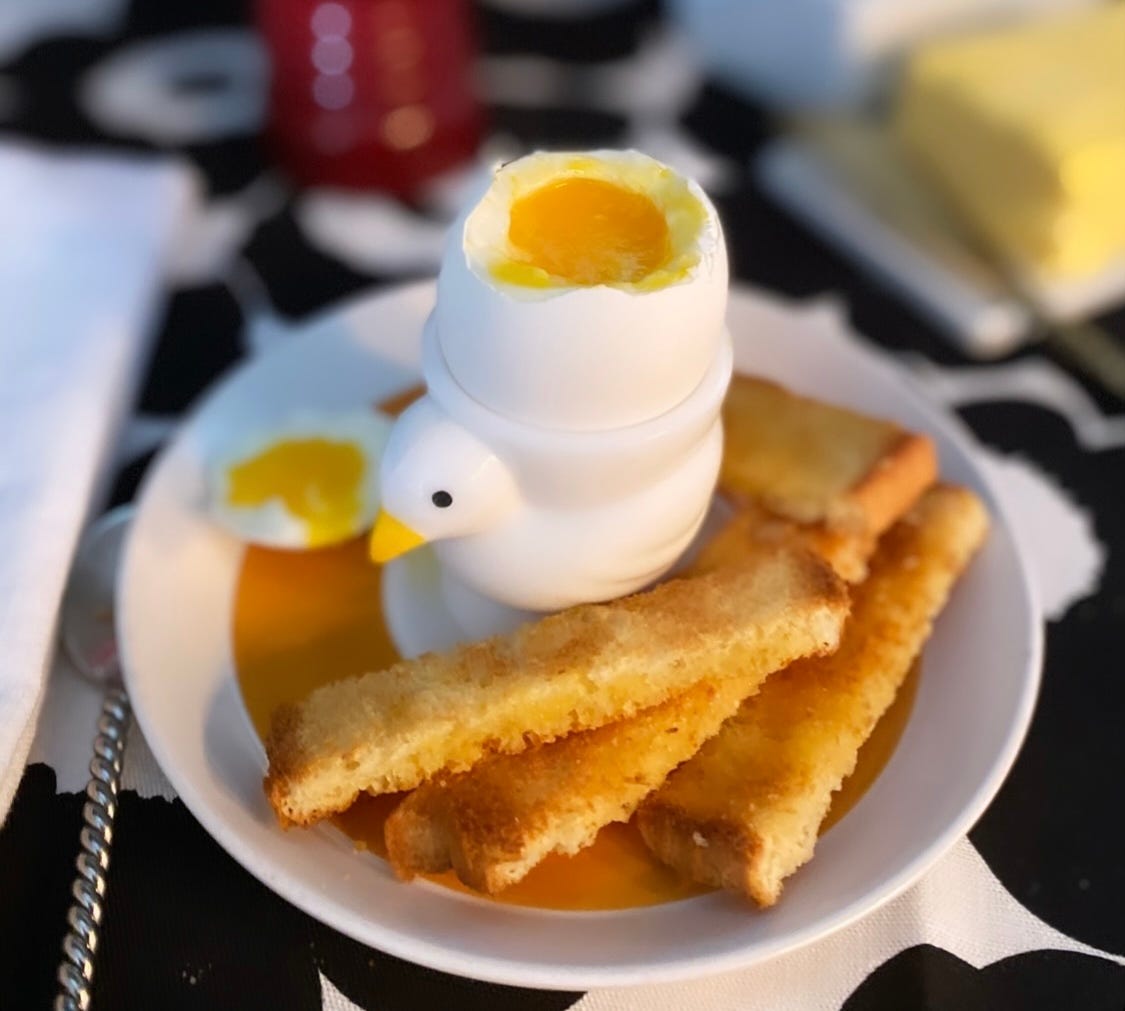

Well, now I'm wondering, as I do with many intriguing things in your photos: where did you get the pan?
Love this, Jolene! The Pullman pan is my fave/only loaf pan, and all of the pan-bread recipes in my book will use it (lid off, mostly, but with instructions for doing it lid-on). For those who are interested, the much-improved shokupain de mie from my upcoming book will be released on Serious Eats in the next week or so (it's just called shokupan there).